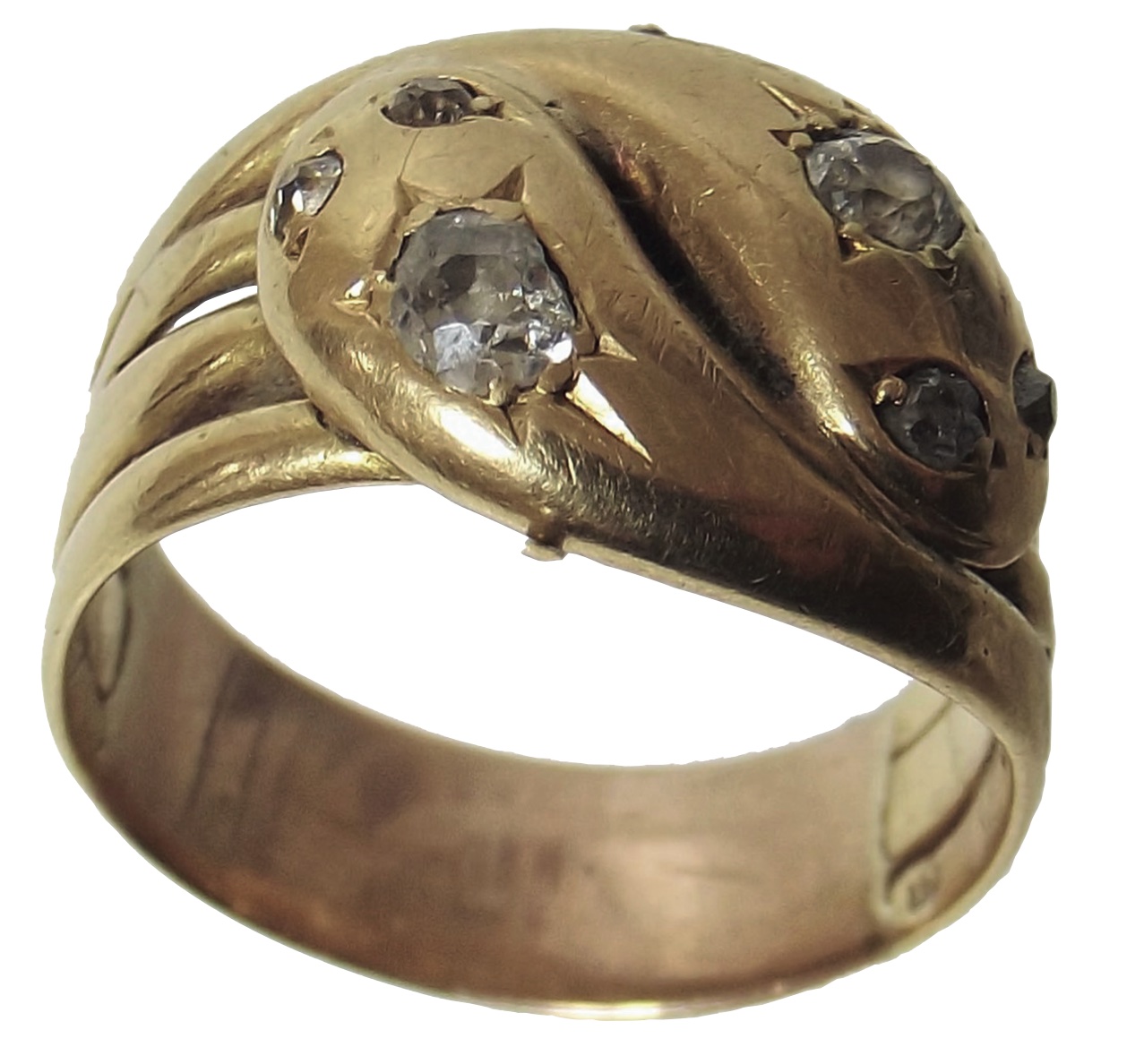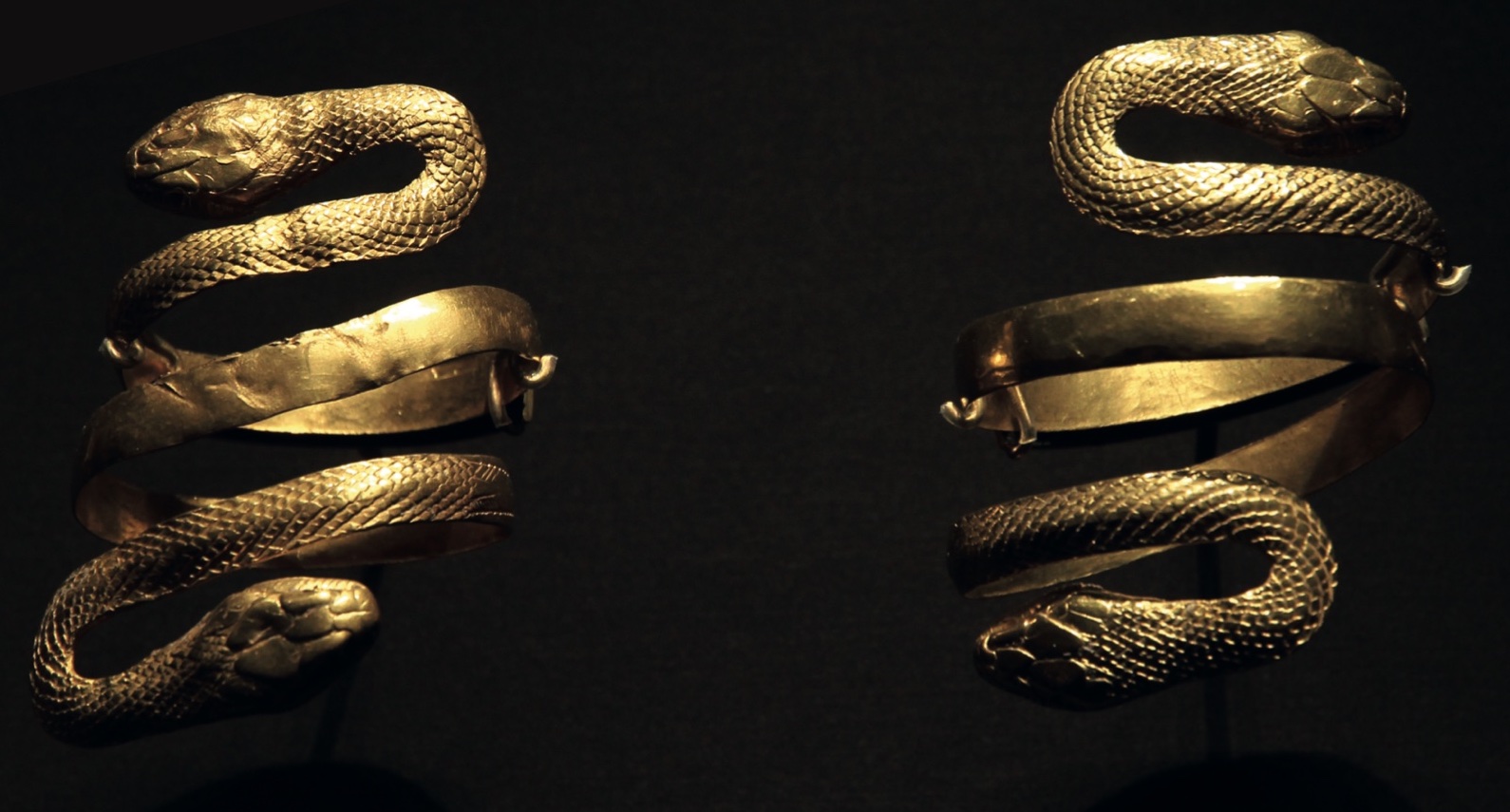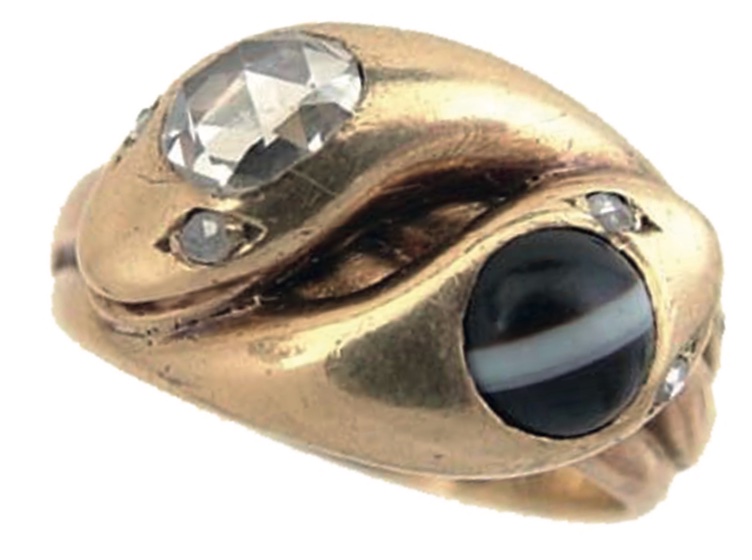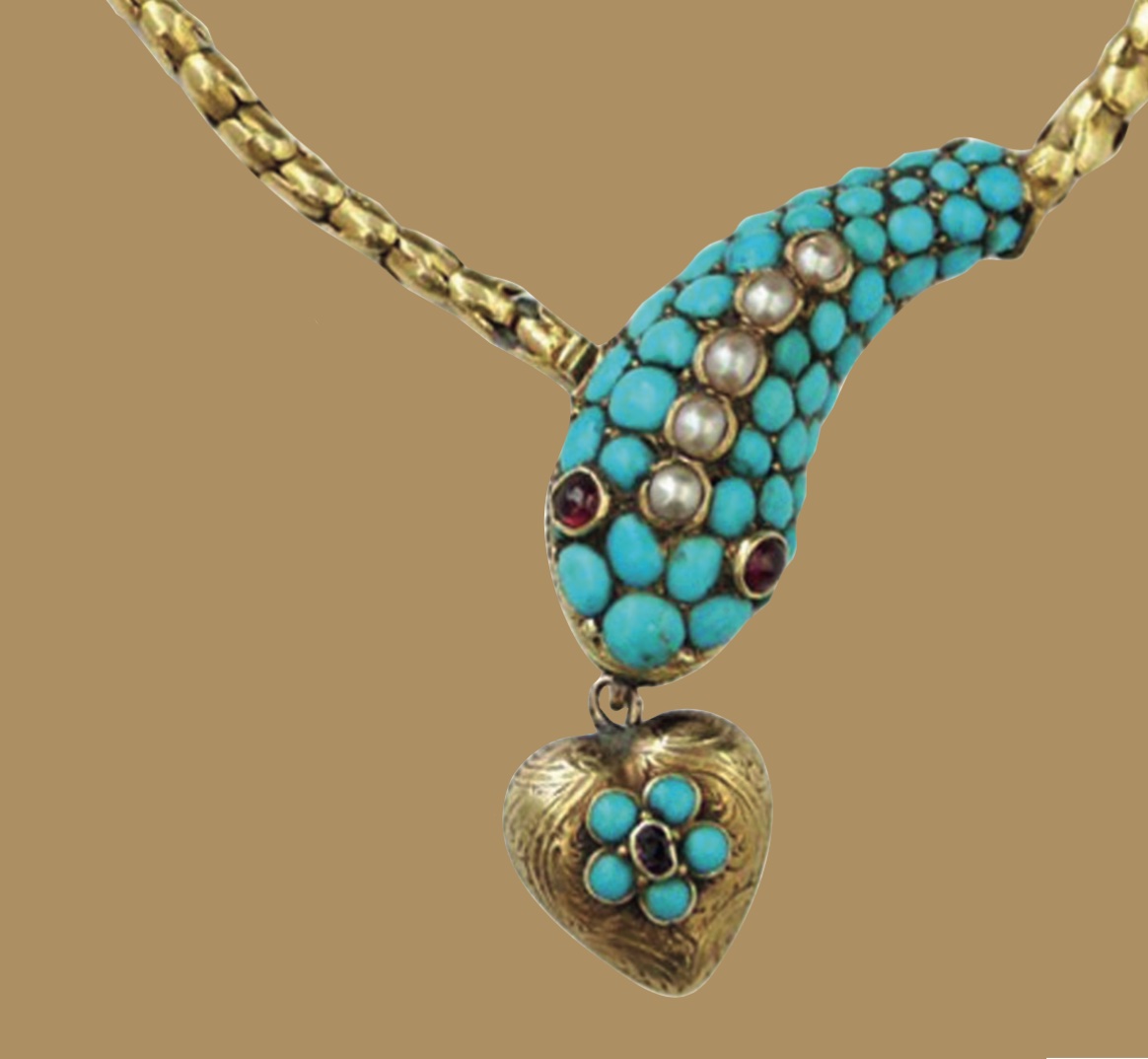Snake Jewellery – the ultimate guide
Snake jewellery has a large following of collectors and achieves fantastic results under the hammer, writes specialist Liz Bailey
Snake Jewellery

Serpent or snake jewellery dates back to ancient Egyptian times; the V&A London has examples of Roman snake jewellery dating from the 1st century in its collection. Ancient reverence for the snake stemmed from its association with Ascelepius, the Greek God of Medicine as well as various guardian spirits. As a result, the snake was seen as a symbol of both wisdom and regeneration, both great properties for talismanic jewellery.

Coiled Design
Often found curving in intricate swirls, or wrapped around itself, snakes are most commonly seen in sentimental jewellery, coiled with its tail in its mouth (known as the ouroboros).
The ouroboros symbolised eternity, applicable for sentimental purposes, perhaps one of the reasons why this motif has flourished in jewellery design right up until the present day, culminating in the sensational Serpenti jewellery by Bulgari, launched in the 1940s and now a best-selling collection for the brand. It is, however, the Victorian era in which the snake jewellery was particularly popular. Indeed, the serpent motif in jewellery was one of the most successful Victorian fashions in jewellery.

Snake Love Token
With irrevocable ties to the greatest love story of the 19th century, snake jewellery was enormously popular as a token of everlasting love. A favourite of Queen Victoria, the snake jewel played a huge part in her betrothal to Prince Albert, with her engagement ring a snake, set with her birthstone of an emerald, finished with ruby eyes and diamond accents.
As well as this, Victoria chose to wear a serpent bracelet to her first council meeting of 1837, ensuring that by the 1840s, the popularity of snake jewellery was at its peak. In 1844, she was said to present “a richly jewelled turquoise serpent bracelet, value £25 as a prize in the lady’s archery contest at Prado”.
The sought-after serpent jewel is found variously modelled in necklaces, rings, brooches and bracelets, with the most luxurious necklaces of the time decorated with royal blue enamel, ruby eyes and diamond flame, while other popular gemstone combinations included turquoise, garnet and split pearl.

Mourning Jewellery
The symbol of the serpent representing eternity also applied to memorial jewellery. Indeed, Dawes & Collings (2018) pointed to the serpent as a “symbol of royal bereavement” alongside crosses, torches and crowns to be worn by loyal subjects from the turn of the 19th century. The first notable example of this in the 19th century was the death of George IV’s daughter Princess Charlotte in 1817, plunging the nation into an atmosphere of national bereavement.
Snakes in their ouroboros form are seen in memorial brooches, and rings and bangles, often decorated with black crosshatched enamel or split pearls representative of tears and bordering a glazed hairwork panel. Other gemstones to be used extensively in memorial jewellery include onyx, banded agate, and even diamonds! Some bangles can be found designed with gold snake heads and tails, supported by braided hairwork bodies. Small mourning brooches in good condition and with engravings sell well at auction, and these were pinned to black ribbon to be worn either around the wrist or the neck of the mourner.
Modern Designs
Present-day snake jewellery is produced and sold by the top jewellery houses, including Bulgari and Cartier. These pieces can reach tens of thousands at auction, depending on the scale, gemstones and design of the piece. Snake jewellery is particularly fashionable and enjoying its time in the spotlight currently, with Serpenti pieces gracing red carpets worn by Charlize Theron, Jessica Biel, Naomi Watts, Bella Hadid and countless others over the last few awards seasons.

Starting a Collection

Snake jewels continue to enjoy their appeal with collectors, and top prices are achieved for Victorian enamel snakes in good condition, closely followed by Victorian turquoise-set snake necklaces, especially enticing to buyers when sold within their original cases.
Condition and later modifications to snake pieces can still attract a healthy hammer price, particularly when set with larger diamonds and rubies.
Early 20th-century snake jewellery also sells well, including gold snake bangles from goldsmiths such as the Birmingham jewellers Smith and Pepper, and Saunders and Shepherd founded in London in 1869 by Cornelius Desormeaux Saunders Sr. and James Francis Hollings Shepherd. Enamelled art nouveau snakes in sinuous lines are rarely seen and can fetch a premium.
Victorian favourite
In the 1840s a particular type of snake necklace started to appear. The necklaces featured a clever clasp linking the tail to the head of the snake and suspending a lovely heart shaped locket or drop pendant.

They are often seen in the royal blue enamel or turquoise combinations, with supple gold linking reminiscent of a snake’s scales. This piece is undoubtedly romantic, featuring the heart locket drop, turquoise scales and forget-me-not decoration.
Turquoise was used extensively in sentimental jewellery, with the colour relating to the forget-me-not flower, signifying love in the popular Victorian language of floriography.
Liz Bailey, MA FGA DGA CPAA is the jewellery, watches and designer specialist at Cheshire-based auctioneers Wilson 55, its next fine jewellery and watches sale is on June 17. For more details go to www.wilson55.com


